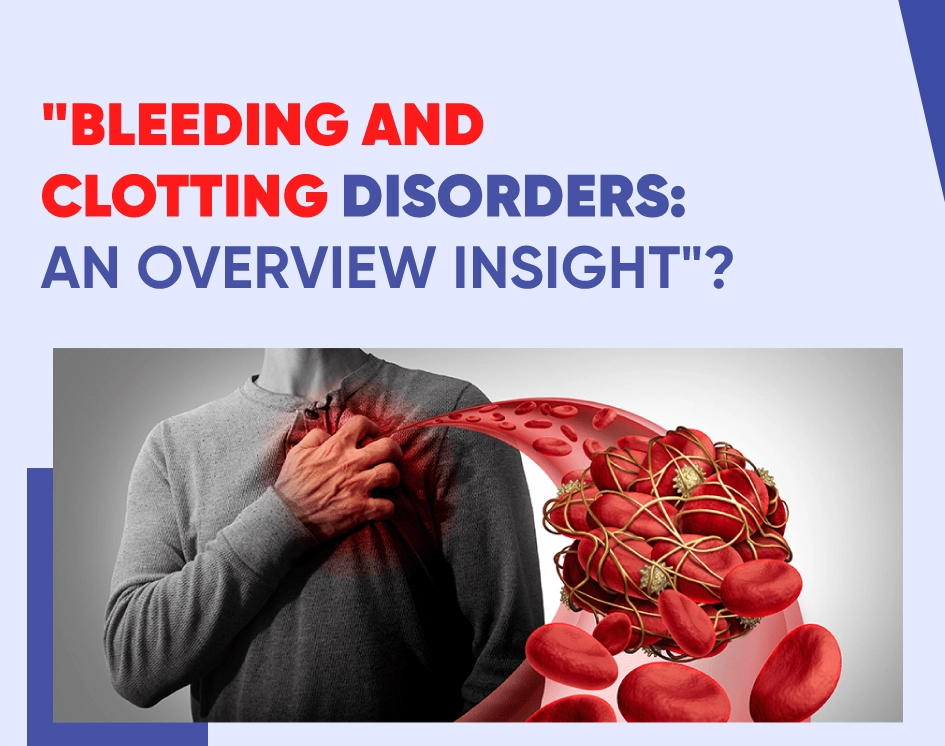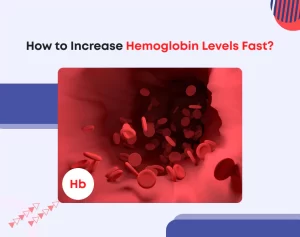
Bleeding and Clotting Disorders: An Overview Insight
Bleeding and clotting disorders, collectively known as hemostatic disorders, are a group of medical conditions that affect the body’s ability to control bleeding and form blood clots properly. These disorders can result from various genetic, acquired, or systemic factors, and they can lead to serious health complications if not promptly diagnosed and managed.
In this overview, we will cover the main types of bleeding and clotting disorders, their causes, symptoms, diagnosis, and treatments.
Types of Bleeding and Clotting Disorders
1. Hemophilia
Blood disorder Hemophilia is a genetic bleeding illness characterized by clotting factor deficits, most often Factor VIII (hemophilia A) or Factor IX (hemophilia B). Even slight injuries cause prolonged bleeding and bruising in people with hemophilia. Complications such as joint and muscle hemorrhage are prevalent.
2. Von Willebrand Disease (VWD)
This is the most common inherited bleeding disorder. It occurs due to a deficiency or dysfunction of von Willebrand factor (vWF), a protein that helps platelets stick to the site of injury and stabilizes clotting factor VIII. VWD leads to prolonged bleeding and easy bruising.
3. Platelet Disorders
Disorders such as Idiopathic Thrombocytopenic Purpura (ITP) and Thrombotic Thrombocytopenic Purpura (TTP) result from abnormalities in platelet function or low platelet counts. This leads to bleeding issues and an increased risk of spontaneous bruising.
4. Coagulation Factor
Deficiencies Apart from hemophilia, deficiencies in other clotting factors, such as Factors II, V, VII, X, XI, or XIII, can lead to bleeding disorders.
5. Disseminated Intravascular Coagulation (DIC):
DIC is not a primary bleeding disorder but rather a secondary complication that can occur due to various conditions like sepsis, trauma, or cancer. In DIC, widespread activation of the clotting system leads to excessive clotting, which can consume clotting factors and cause bleeding.
Causes of Bleeding and Clotting Disorders:
Genetic Mutations: Inherited genetic mutations cause hemophilia, VWD, and other clotting factor deficiencies.
Autoimmune Reactions: In conditions like ITP, the immune system may mistakenly attack and destroy platelets.
Liver Disease: The liver produces many clotting factors, so liver dysfunction can lead to clotting factor deficiencies.
Medications: Certain drugs can interfere with platelet function or disrupt clotting factors, leading to bleeding issues.
Cancers: Some cancers release substances that activate clotting and cause DIC.
Vitamin Deficiencies: Lack of vitamin K can impair the synthesis of clotting factors.
Symptoms and Diagnosis:
Symptoms of bleeding and clotting disorders may include:
- Excessive or prolonged bleeding from cuts or injuries
- Frequent nosebleeds
- Easy bruising
- Bleeding gums
- Heavy or prolonged menstrual periods (in females)
- Blood in the urine or stool
Diagnosis involves a combination of medical history, physical examination, blood tests to assess clotting factors and platelet function, and specialized coagulation studies. Genetic testing may be necessary to identify specific mutations in inherited disorders.
Treatments:
Treatment approaches depend on the type and severity of the disorder:
Replacement Therapy: Hemophilia and some other clotting factor deficiencies are treated with intravenous infusions of the specific missing clotting factor concentrates.
Desmopressin (DDAVP): This synthetic hormone can stimulate the release of vWF and factor VIII, which is useful in treating some cases of VWD.
Platelet Transfusions: Platelet disorders or low platelet counts may require platelet transfusions to control bleeding.
Immunosuppressive Therapy: In autoimmune-related disorders like ITP, medications to suppress the immune system can help control platelet destruction.
Hormonal Therapy: Hormonal treatments can be used to regulate menstrual bleeding in some cases.
Anticoagulants: In conditions where there is an increased risk of clotting, such as DIC or certain cardiovascular conditions, anticoagulant medications may be used.
Supportive Care: Alongside specific treatments, supportive care and measures like avoiding trauma and injury, maintaining good oral hygiene, and using soft toothbrushes can minimize bleeding complications.
Bottomline
In conclusion, bleeding and clotting disorders encompass a wide range of conditions that can have significant health implications. Early diagnosis and appropriate management are essential to prevent complications and improve the quality of life for those affected by these disorders. If you suspect you or someone you know may have a bleeding or clotting disorder, seek medical attention promptly for proper evaluation and care.






